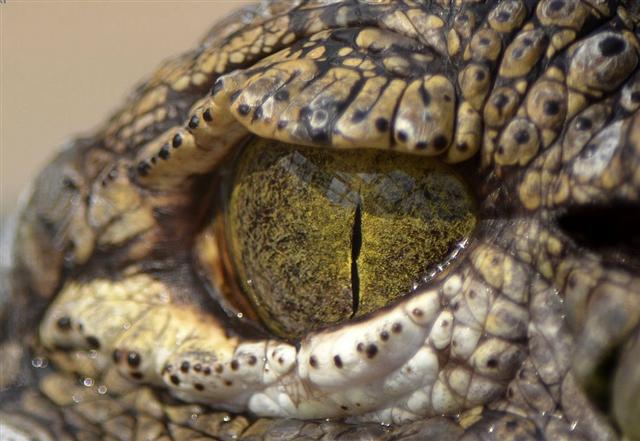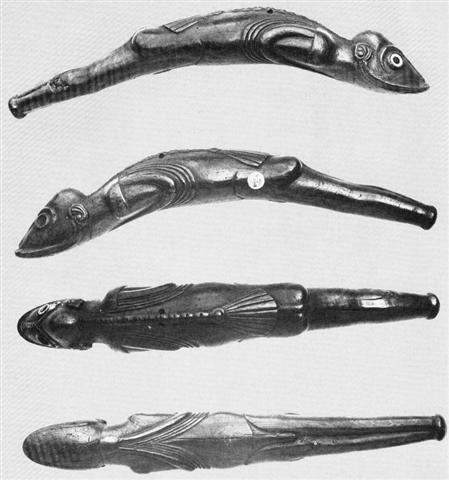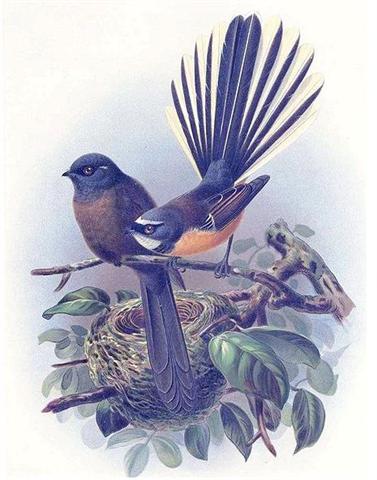514. The Explorers (planets in the
night) reached Easter Island in Te Maro 1
and this date seems to correspond not to the day of June 1 (152)
but to day 152 - 16 = 136 (May 16).
| May 16 (136) |
51 |
July 7 (188 = 204 - 16) |
27 |
August 4 (216) |
| Te Maro 1 (152) |
He Anakena 23 (204) |
Hora Iti 20 (232) |
| CLOSE TO THE SUN: |
| Nov 13 |
14 |
15 |
16 (320) |
| 'Oct 17 (290) |
18 |
19 |
20 |
 |
 |
 |
 |
| te ua |
koia ra |
kua tuku ki to mata - ki tona tukuga |
e kiore - henua - pa rei |
|
... tukuga, mat spread on the ground; tukuga tagata, mat on which have been put pieces of cooked human flesh. Tukuga, plate, ladle, pottinger, legacy, to dedicate (tukaga) ... |
| Cb2-4 (420 = 740 - 320) |
Cb2-5 (392 + 29) |
Cb2-6 |
Cb2-7 |
| CLOSE TO THE FULL MOON: |
| Vaitu Potu 29 (150) |
30 |
Te Maro 1 (136 + 16) |
2 |
|
Potu. Small stick (toothpick?); extremity or remainder of something. Vanaga. End, tip. Potupotu, cockroach. Churchill.
The remainder (potu) of the last half of the double-month of Vai-tu corresponded to the pair ua (rain) in Cb2-4 together with tagata compounded with a little digging stick (potu) in front.
... What do I mean by a compound? By compound I mean a glyph which presumably is not fundamental (like an atom) but instead the result of the blending together of two or more types of glyphs (like in a chemical compound).

I believe this example is made by fusion between these two types of glyph:
 
Compounds are often difficult to 'see through', when the glyphs partaking are shown just by a little sign ... |
|
May 14
δ Persei (54.7)
|
15 (500 = 365 + 135)
Al Thurayya-27 (Many Little Ones) / Krittikā-3 (Nurses of Kārttikeya) / TAU-ONO (Six Stones)
ATIKS = ο Persei, RANA (Frog) = δ Eridani (55.1), CELAENO (16 Tauri), ELECTRA (17), TAYGETA (19), ν Persei (55.3), MAIA (20), ASTEROPE (21), MEROPE (23) (55.6) |
16 (136 = 365 - 229) Hairy Head-18 (Cockerel) / Temennu-3 (Foundation Stone)
ALCYONE (56.1), PLEIONE (28 Tauri), ATLAS (27 Tauri) (56.3)
|
17
MENKHIB (Next to the Pleiades = ζ Persei (57.6)
PORRIMA (γ Virginis)
|
| 'April 17 (80 + 27) |
18 (108 = 135 - 27) |
19 |
20 |
| MARCH 11 (70 = 350 / 5) |
12 (355 / 5) |
13 (72 = 360 / 5 = 136 - 64) |
14 (365 / 5 = 73) |
| BISSEXTUM (54 - 55) |
DAY 56 (8 WEEKS) |
57 (= 137 - 64 - 16) |
|
... The leap day was introduced as part of the Julian reform. The day following the Terminalia (February 23) was doubled, forming the 'bis sextum - literally 'double sixth', since February 24 was 'the sixth day before the Kalends of March' using Roman inclusive counting (March 1 was the 'first day'). Although exceptions exist, the first day of the bis sextum (February 24) was usually regarded as the intercalated or 'bissextile' day since the third century. February 29 came to be regarded as the leap day when the Roman system of numbering days was replaced by sequential numbering in the late Middle Ages ... |
|
... [E:17] On the twenty-fifth day of the first month (Vaitu Nui), Ira and Makoi set sail; on the first day of June ('Maro'), the bow of Ira's canoe appeared on the distant horizon, came closer and closer on its course, and sailed along, and finally (one) could see the (new home) land ... |
Thus the year of the Pleiades evidently
should have begun in Te Maro
1 when the Ezplorers
reached dry land, where they made land-fall. Maro
means dry.

Ira and Makoi had set
sail in Vaitu Nui 25, which ought to
correspond to the day when the stars with true
heliacal risings in day 115 (April 25) - 16 = 99
(April 9) returned to visibility.
... The
substitution of
the sun for the
sail, both of
which are called
ra or
raa in
Polynesia, is a
remarkable
feature in
Easter Island
art ...
 |
 |
 |
 |
|
maitaki |
Eb6-1 |
Emptiness |
*Ca14-21 |
 |
 |
 |
 |
 |
 |
|
te
honu
paka |
te
henua |
honu
kau |
te
mata |
te
honu |
kua
heheu |
|
*Ca14-18 |
*Ca14-19 |
*Ca14-20 |
*Ca14-21
(384) |
*Ca14-22 |
*Ca14-23 |
|
...
But
in
the
fullness
of
time
an
obscure
instinct
led
the
eldest
of
them
towards
the
anthill
which
had
been
occupied
by
the
Nummo.
He
wore
on
his
head
a
head-dress
and
to
protect
him
from
the
sun,
the
wooden
bowl
he
used
for
his
food.
He
put
his
two
feet
into
the
opening
of
the
anthill,
that
is
of
the
earth's
womb,
and
sank
in
slowly
as
if
for
a
parturition
a
tergo.
The
whole
of
him
thus
entered
into
the
earth,
and
his
head
itself
disappeared.
But
he
left
on
the
ground,
as
evidence
of
his
passage
into
that
world,
the
bowl
which
had
caught
on
the
edges
of
the
opening.
All
that
remained
on
the
anthill
was
the
round
wooden
bowl,
still
bearing
traces
of
the
food
and
the
finger-prints
of
its
vanished
owner,
symbol
of
his
body
and
of
his
human
nature,
as,
in
the
animal
world,
is
the
skin
which
a
reptile
has
shed
... |
|
CLOSE
TO
THE
SUN: |
|
Oct
6
AL
DAFĪRAH
(Tuft)
= β
Com.
Ber.
(199.4)
*158.0
=
*199.4
-
*41.4 |
7
σ
Virginis
(200.4)
*159.0
=
*200.4
-
*41.4
|
8
γ
Hydrae
(201.0),
ι
Centauri
(201.4)
*160.0
=
*201.4
-
*41.4 |
9
Al
Simāk-12
(Lofty)
/
Chitra-14
(Bright
One)
/
Horn-1
(Crocodile)
/
Sa-Sha-Shirū-20
(Virgin's
Girdle)
/
ANA-ROTO-3
(Middle
pillar)
MIZAR
=
ζ
Ursae
Majoris
(202.4),
SPICA
=
α
Virginis,
ALCOR
= 80
Ursae
Majoris
(202.7)
SADALMELIK
(α
Aquarii)
*161.0
=
*202.4
-
41.4 |
10
(283)
71
VIRGINIS
(203.6) |
11
(300
-
16)
no
star
listed
(204) |
 |
|
CLOSE
TO
THE
FULL
MOON: |
|
Vaitu
Nui
21 |
22 |
23 |
24 |
(115
→
Mercury) |
26
(100
+
16) |
|
April
5
(460
=
365
+
95)
β
Phoenicis
(15.1),
υ
Phoenicis,
ι
Tucanae
(15.6),
η
Ceti,
ζ
Phoenicis
(15.7) |
6
MIRACH
= β
Andromedae,
KEUN
MAN
MUN
(Camp's
South
Gate)
= φ
Andromedae
(16.0),
ANUNITUM
= τ
Piscium
(16.5),
REVATI
= ζ
Piscium
(16.9)
REGULUS
(α
Leonis)
|
7
ν
Phoenicis
(17.4),
κ
Tucanae
(17.6)
*41.4
-
*17.4
=
*24.0 |
8
no
star
listed
(18) |
9
ADHIL
(Garment's
Train)
= ξ
Andromedae
(19.3),
θ
Ceti
(19.7) |
10
(100
=
284
-
184)
KSORA
(Knee)
=
δ
Cassiopeiae
(20.1),
ω
Andromedae
(20.6),
γ
Phoenicis
(20.8) |
|
DAY
15 |
16 |
17 |
18 |
19
(=
56 -
20) |
20 |
 |
The train of the garment of Andromeda
(ξ) rose with the Sun
37 days before Alcyone. From Vaitu Nui 25
(115) to Te Maro 1 (152) there were 37 days.
*19 (Adhil) + *37 = *56 (Alcyone). This was the
duration of the Sea-voyage of the Explorers.
There were 183
days from Vaitu Nui 25 (115) to their
departure from Easter Island. 115 - 16 - 80 + 183 =
298 - 96 = *202 (Spica) = *19 (Adhil) + *183:
 |
 |
 |
 |
 |
|
te
hokohuki |
te moko |
vero
hia |
tagata
honui |
e ha
mata |
 |
|
Cb8-4 |
Cb8-5 |
Cb8-6 (177 = 6 * 29˝) |
Cb8-7 (392 + 178 = 540) |
Cb8-8 |
|
CLOSE
TO
THE
SUN: |
|
Vaitu
Nui
24 |
25 |
26
(100
+
16) |
27 |
28 |
|
April 8
no
star
listed
(18) |
9
ADHIL
(Garment's
Train)
= ξ
Andromedae
(19.3),
θ
Ceti
(19.7) |
10
(100
=
284
-
184)
KSORA
(Knee)
=
δ
Cassiopeiae
(20.1),
ω
Andromedae
(20.6),
γ
Phoenicis
(20.8) |
δ Phoenicis (21.5) |
υ Andromedae (22.9) |
|
'March 12 |
13 (72 = 360 / 5) |
14 → π |
15 |
16 |
|
CLOSE
TO
THE
FULL
MOON: |
|
Tangaroa Uri 24 |
25 |
26
(299
=
283
+
16) |
27 |
28 |
|
Oct 8
γ
Hydrae
(201.0),
ι
Centauri
(201.4)
*160.0
=
*201.4
-
*41.4 |
9
Al
Simāk-12
(Lofty)
/
Chitra-14
(Bright
One)
/
Horn-1
(Crocodile)
/
Sa-Sha-Shirū-20
(Virgin's
Girdle)
/
ANA-ROTO-3
(Middle
pillar)
MIZAR
=
ζ
Ursae
Majoris
(202.4),
SPICA
=
α
Virginis,
ALCOR
= 80
Ursae
Majoris
(202.7)
SADALMELIK
(α
Aquarii)
*161.0
=
*202.4
-
41.4 |
10
(283)
71
VIRGINIS
(203.6) |
11
(300
-
16)
no
star
listed
(204) |
HEZE = ζ Virginis
(205.0),
Southern Pinwheel Galaxy
= M83 Hydrae
(205.7) |
|
'Sept 11 |
12 (355 - 100) |
13 (256 = 8 * 32) |
14 |
15 |

...
Maui
at first assumed the
form of a kiore,
or rat, to enter the
body of Hine. But
tataeko, the
little whitehead, said
he would never succeed
in that form. So he took
the form of a toke,
or earth-worm. But
tiwaiwaka the
fantail, who did not
like worms, was against
this. So Maui
turned himself into a
moko huruhuru, a
kind of caterpillar that
glistens. It was agreed
that this looked best,
and so Maui
started forth, with
comical movements. The
little birds now did
their best to comply
with Maui's wish.
They sat as still as
they could, and held
their beaks shut tight,
and tried not to laugh.
But it was impossible.
It was the way Maui
went in that gave them
the giggles, and in a
moment little
tiwaiwaka the
fantail could no longer
contain himself. He
laughed out loud, with
his merry, cheeky note,
and danced about with
delight, his tail
flickering and his beak
snapping. Hine nui
awoke with a start. She
realised what was
happening, and in a
moment it was all over
with Maui. By the
way of rebirth he met
his end ...
 |
The vero
type of glyph could in this
instance have referred to April:
 |
 |
|
vero |
April
10
(100) |
... 1. Arrow,
dart, harpoon, lance, spear,
nail, to lacerate, to
transpierce (veo). P
Mgv.: vero, to dart,
to throw a lance, the tail;
verovero, ray, beam,
tentacle. Mq.: veó,
dart, lance, harpoon, tail,
horn. Ta.: vero,
dart, lance. 2. To turn over
face down. 3. Ta.:
verovero, to twinkle
like the stars. Ha.:
welowelo, the light of a
firebrand thrown into the
air. 4. Mq.: veo,
tenth month of the lunar
year. Ha.: welo, a
month (about April) ...
... A vestige of the
practice of putting the king
to death at the end of a
year's reign appears to have
survived in the festival
called Macahity,
which used to be celebrated
in Hawaii during the last
month of the year. About a
hundred years ago a Russian
voyager described the custom
as follows: 'The taboo
Macahity is not unlike
to our festival of
Christmas. It continues a
whole month, during which
the people amuse themselves
with dances, plays, and
sham-fights of every kind.
The king must open this
festival wherever he is. On
this occasion his majesty
dresses himself in his
richest cloak and helmet,
and is paddled in a canoe
along the shore, followed
sometimes by many of his
subjects. He embarks early,
and must finish his
excursion at sunrise. The
strongest and most expert of
the warriors is chosen to
receive him on his landing.
The warrior watches the
canoe along the beach; and
as soon as the king lands,
and has thrown off his
cloak, he darts his spear at
him, from a distance of
about thirty paces, and the
king must either catch the
spear in his hand, or suffer
from it: there is no jesting
in the business. Having
caught it, he carries it
under his arm, with the
sharp end downwards, into
the temple or heavoo.
On his entrance, the
assembled multitude begin
their sham-fights, and
immediately the air is
obscured by clouds of
spears, made for the
occasion with blunted ends.
Hamamea (the king)
has been frequently advised
to abolish this ridiculous
ceremony, in which he risks
his life every year; but to
no effect. His answer always
is, that he is as able to
catch a spear as any one on
the island is to throw it at
him. During the Macahity,
all punishments are remitted
throughout the country; and
no person can leave the
place in which he commences
these holidays, let the
affair be ever so important
...

|

















